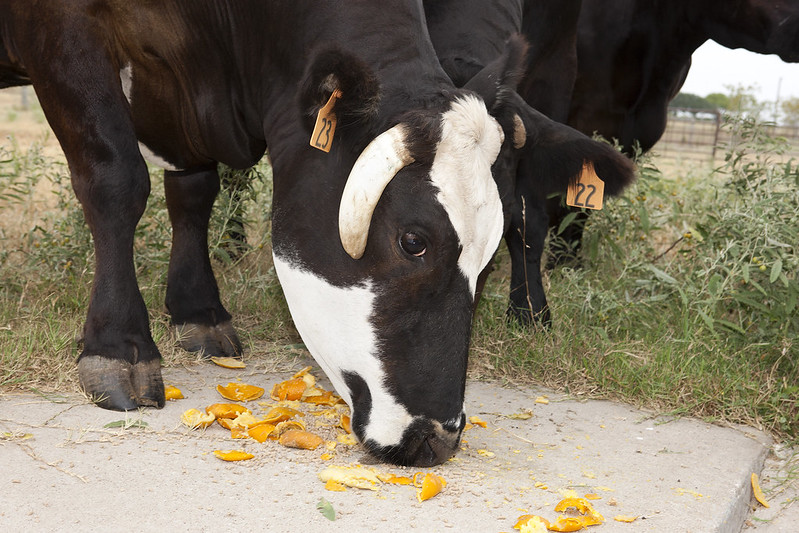Combating Antimicrobial Resistance
ARS has a unique role in identifying antimicrobial resistance (AMR) associated with new and emerging animal, plant, environmental, and foodborne pathogens. Using multidisciplinary approaches, ARS scientists conduct research on factors that impact the development of AMR across the entire food production chain, including the environment. Studies include developing mitigation strategies and alternatives that reduce the need for antibiotics while protecting animals from disease. ARS has contributed significant new information about AMR associated with multidrug-resistant human and animal pathogens; the ecology of AMR in agricultural and natural systems; the susceptibility of foodborne pathogens to biocides such as preservatives and disinfectants; and antibiotics critical to human medicine. The following 2021 accomplishments highlight ARS advances in optimizing the use of and reducing the need for antibiotics in agriculture.
Defining baseline antibiotic resistance levels in agricultural systems. There is broad consensus that agricultural antibiotic resistance in environmental bacteria needs to be reduced, but it is unclear what an appropriate target level for reduction should be or how to measure progress. ARS scientists in Lincoln, Nebraska, addressed both questions by measuring antibiotic resistance in microorganisms in soils from natural settings and organic farming operations. The data were shared with the USDA Office of Chief Scientist, Presidential Advisory Council on Combating Antimicrobial Resistance, National Academies of Science and Engineering, The Wellcome Trust, and U.S. Centers for Disease Control and Prevention, and helped support U.S. policy positions for international trade negotiations around antibiotic resistance in U.S. agricultural products.
The scientists also developed molecular surveillance tools and quality control measures that are now broadly used to track antibiotic resistance in the environment and from farm-to-fork assessments.
A new tool to identify resistance genes in pathogens. Antimicrobial resistant (AMR) bacteria cause 2.8 million infections and more than 35,000 deaths each year in the United States. A multi-agency team that included the National Center for Biological Information, U.S. Food and Drug Administration, USDA-Food Safety Inspection Service, and ARS researchers in Athens, Georgia, developed the Bacterial Antimicrobial Resistance Reference Gene Database and the AMRFinderPlus gene detection tool. The database includes 7,737 antibiotic, acid, biocide, metal, and stress resistance genes that can be detected by AMRFinderPlus in whole genome sequences of any bacteria. Users can restrict their searches to antibiotic resistance genes or can include stress response and virulence genes in the search. This tool increases the number and type of gene that can be targeted to better understand AMR in important human pathogens, thereby improving food safety and public health.
Germ-fighting, durable, nano-enhanced cotton. Current methods to make fabrics with germ-fighting properties rely on surface coatings, but these surface coatings typically have poor durability and lose their functionality after only a few uses. ARS scientists in New Orleans, Louisiana, developed a new technology to produce permanent antimicrobial cotton products by synthesizing inexpensive copper oxide nanoparticles, which are powerful antimicrobial agents, within the cotton fiber. This process does not require the use of harsh chemicals. It is the first known development of a nano-enhanced cotton having long-lasting antimicrobial performance (50 laundering cycles) that is easily transferrable to large-scale manufacturing. It
is anticipated that these active fabrics will have a market value reaching $1.1 billion by 2026.
Characterization of metal tolerance in a pork outbreak-associated Salmonella strain. High levels of copper and zinc are frequently included in young pig diets as alternatives to antimicrobials to reduce pathogens and increase animal growth. However, the continuous use of copper or zinc may promote metal tolerance in bacterial pathogens. ARS researchers in Ames, Iowa, found that a Salmonella strain associated with a 2015 U.S. human outbreak linked to pork had increased genetic tolerance to copper, arsenic, and antimony. Furthermore, ARS researchers found that metal tolerance in this Salmonella strain can be transferred to other bacterial isolates and increase their metal tolerance; therefore, using elevated levels of zinc and copper in nursery swine diets may prompt the evolution of pathogen strains with more metal resistance and enable their colonization in pigs over the long term. This research provides information to veterinarians, swine producers, and microbiologists that certain Salmonella strains in U.S.
pig populations have increased tolerance to copper used in animal production. The presence of metal tolerance genes in bacterial populations may limit the effectiveness of metals used to control disease.
 Greb, Peggy. Cows enjoy eating orange peel and pulp on Dec. 6, 200, but these citrus byproducts are more than just tasty and nutritious, they also have an antimicrobial effect in the cow’s gut. 2002. USDA Photo. https://flic.kr/p/dQoutH
Greb, Peggy. Cows enjoy eating orange peel and pulp on Dec. 6, 200, but these citrus byproducts are more than just tasty and nutritious, they also have an antimicrobial effect in the cow’s gut. 2002. USDA Photo. https://flic.kr/p/dQoutH

